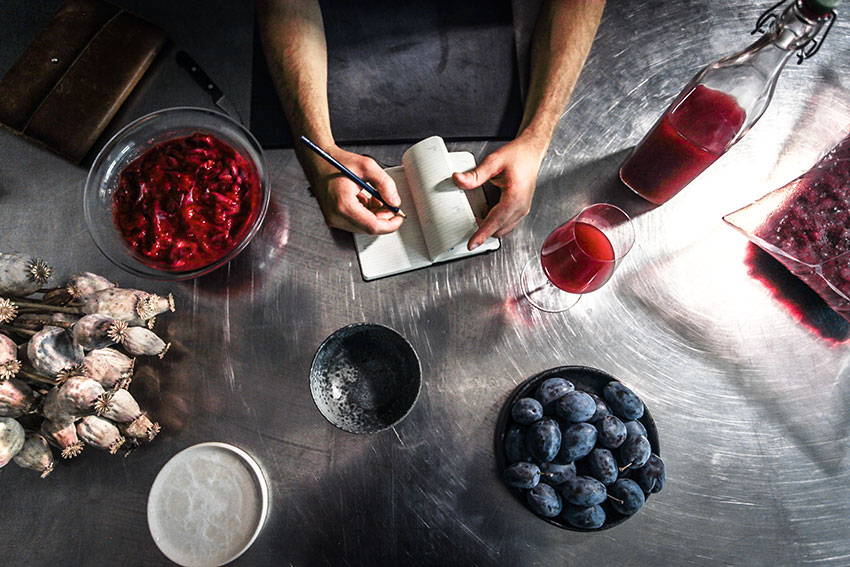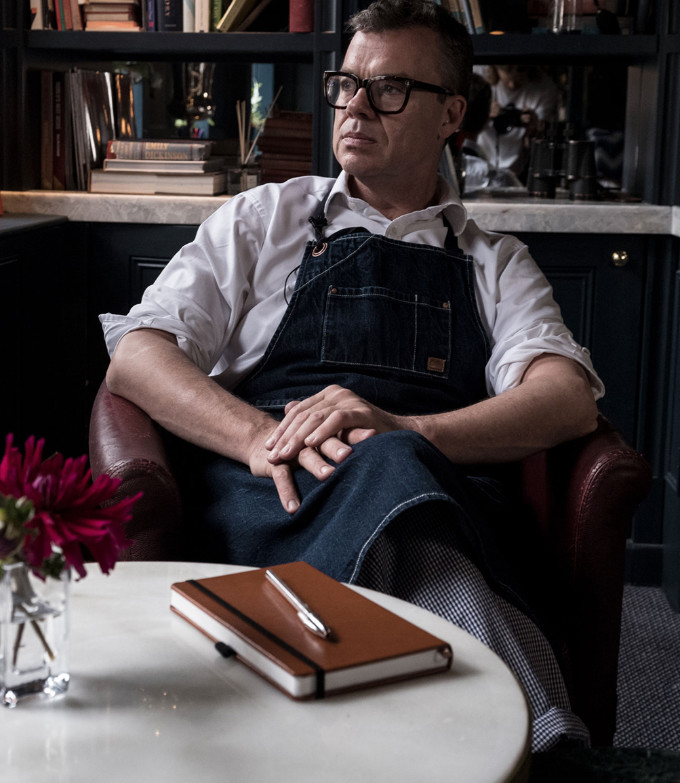
Only one man can stake a claim to have 3 Michelin stars using ingredients sourced only from a mountain. Imagine the winter season. You can barely see grass, let alone anything that looks colourful or not covered in snow. To add to that, he is a champion of sustainability and he takes pride in teaching younger chefs to learn how he does it.
Italian chef Norbert Niederkofler has been working at St Hubertus for over 20 years with the Pizzinini family. During that time, his restaurant went from being a pizzeria to an Italian/French restaurant and, eventually, to a mecca for mountain cuisine. After working in starred restaurants around the world, Norbert has everything a chef would desire, bundles of creativity, experience and strong technical skills. He used these qualities to visit local farmers, producers and influencers in his home region of South Tyrol to build a network of his own suppliers. Even Valentin, a family man next door with a big garden, who will one day make it his business thanks to Norbert.

In 2004 Norbert controversially removed Foie Gras from his menu, which was one of the most popular dishes at the restaurant to pursue his Mountain menu.
“I didn’t care what they would say, I wanted to do things my way. I’m stubborn like that”.
What Norbert realised is that to survive as a sustainable restaurant in one of the most difficult terrains in the world and produce quality, consistent products all year round, he had to build a network of friends and experts he could rely on in the local area. Shorten the supply chain and be in control of what they grew, even if that meant taking his car to pick up produce for the restaurant that evening. The network, now called “Cook the Mountain” is over 10 years old and one moment in particular, with his fruit and vegetable supplier Valentin, would define the success of his model kitchen.
“When I arrived in the restaurant kitchen one morning, I saw this plum roll past my foot, then a second and then a third. Looking up, I saw over 200 plums on my kitchen top, standing there was Valentin and Michele (my sous chef). Valentin told us he picked them from the tree in his front garden and asked us if we could take them.
”We always start with considering how we can use the ingredient without any waste. At first, we thought, let’s explore ways we could use them as a garnish for a new pork dish. Our pastry chef already had his eyes on them but we didn’t want to take the obvious choice of handing them over to pastry. That would be too easy and that’s not our style. Eventually, Michele had an idea to ferment them. We often experimented with finding alternatives for citrus fruits because they don’t grow on the mountains and we must find other ways to add acidity to dishes. We stored the plums for 6 months in salt and grapeseed oil and waited to taste the results.


”Every month we would open the jar, take a sniff and then taste the fermented plum. By the 1st month, it was still very sweet like a jam. By 3 months, the jam had some kick to it and a longer finish. By 5 months, the flavour was longer in the mouth and there was strong acidity, maybe too much at this point.
”In the winter, as I was in my office, Michele arrives with a jar and passes me a spoon full of purple fermented plum. He adds a leaf of basil and a few sour-bread crumbs on top. “Close your eyes, what do you taste?” He said. I could not believe it, the plums had given us the exact taste and acidity of a tomato but with Michele’s additions, it tasted like Bruschetta with tomatoes. A taste of Tuscany in the Dolomites without ordering the ingredients from 1000km away. We quickly turned it into a restaurant dish with basil oil to bring the flavours together in a more elegant fashion.
”The dish called “Pomodoro?” is on the menu today and I like to serve it at the start of the tasting menu. It proves you can achieve anything in the kitchen if you have a solid base in classic cooking, combined with a natural, creative approach. There is no such thing as a limited larder. We look at what mother nature has provided to us and we think about how to use 100% of the ingredient.


”There are many techniques to use in order to use 100% of the ingredient. We pride ourselves in finding them all eventually. Fermentation has always been a solid base to start, especially when you want to play with acidity and mother nature gives you a ton of fruit.
”When you are a young chef, you should master the classics of cooking. Don’t be afraid to return to the basics again and again. If you lack a solid base in classic cooking, then when it comes to this natural approach to food, sooner or later you will fall on your face.
”The concept ‘Cook the Mountain’ gave us the right platform to start creating new ideas about dishes, combinations and products. Another great dish that showcases the process is our White Fish Tartare.
”It was no good just using half of the fish and throwing it away, we had to use all of it, everything. The guys and girls in the kitchen could not solve this puzzle for a while, the meat was so delicate. We decided to spend 2 days with the mountain lake fishermen to understand preservation techniques and research different ways to prepare the fish. I called my chef friends from around the world to bounce ideas and talk about their preparation techniques. Eventually, after a few weeks of testing, we arrived at a recipe that matched our style.
”At first, we clean the fish, remove their insides and bones but keep them to one side. Remove all the scales and keep the meat to one side. With the scales, we keep them under running water for a few hours, then put them in the dehydrator and fry them. These become the crispy part of the dish. The meat of the fish is marinated with salt and sugar. Washed and chopped as the tartare should be. We roast the bones and add them to our white wine sauce along with the insides to get all the flavour out of it. Serve cool to get the exact temperature a fish would be when freshly caught. A recipe created by solving a problem using a network of producers and chefs with a fine tuning of taste here or there.
It is another dish is on my menu today, a popular starter, elegant, clean and personally I order this for myself just before service because I still smile every time I taste it. This a perfect example of how ‘Cook the Mountain’ influences our dishes; we have an awesome product, we use the whole product, the result is delicious.




